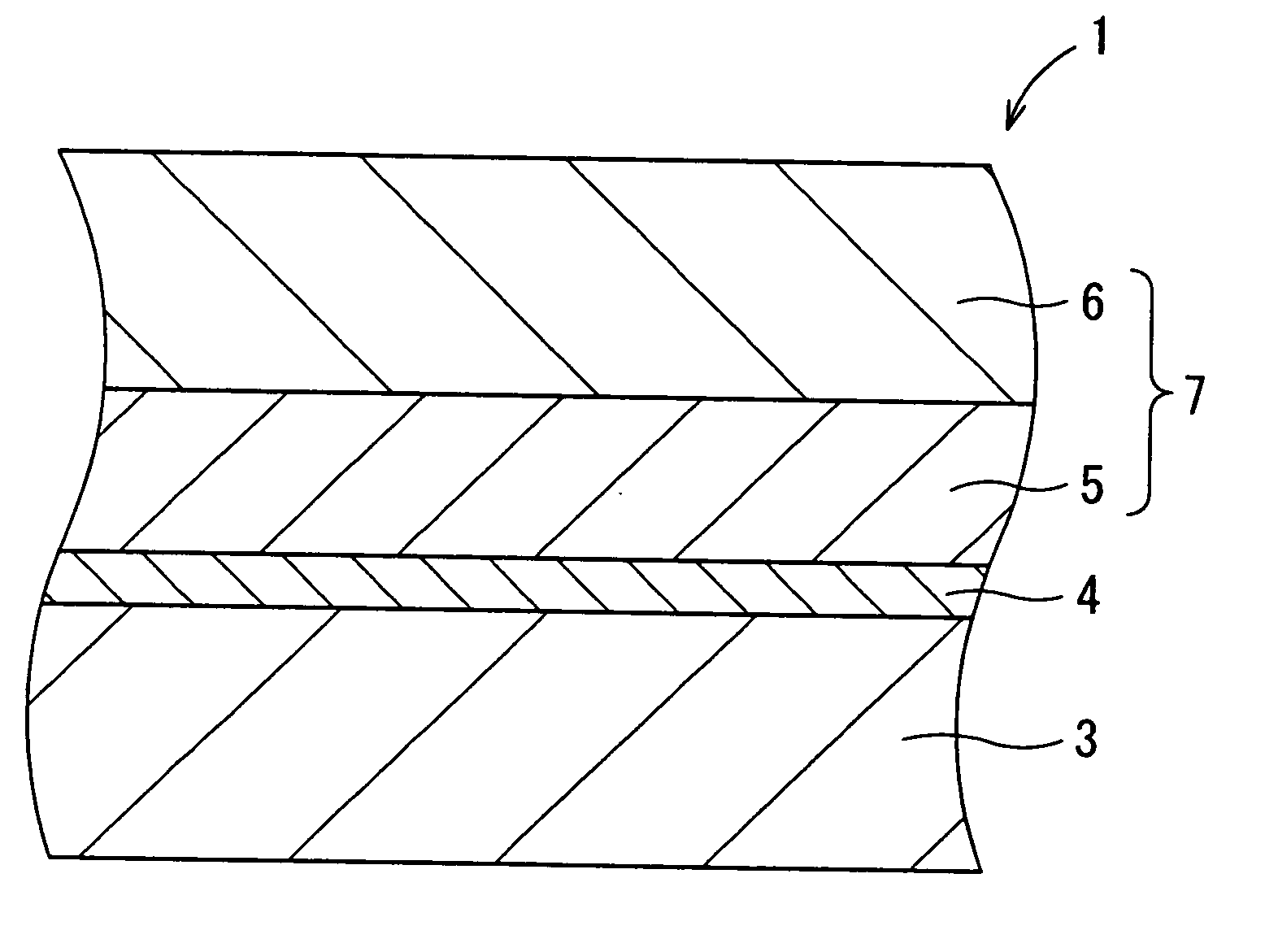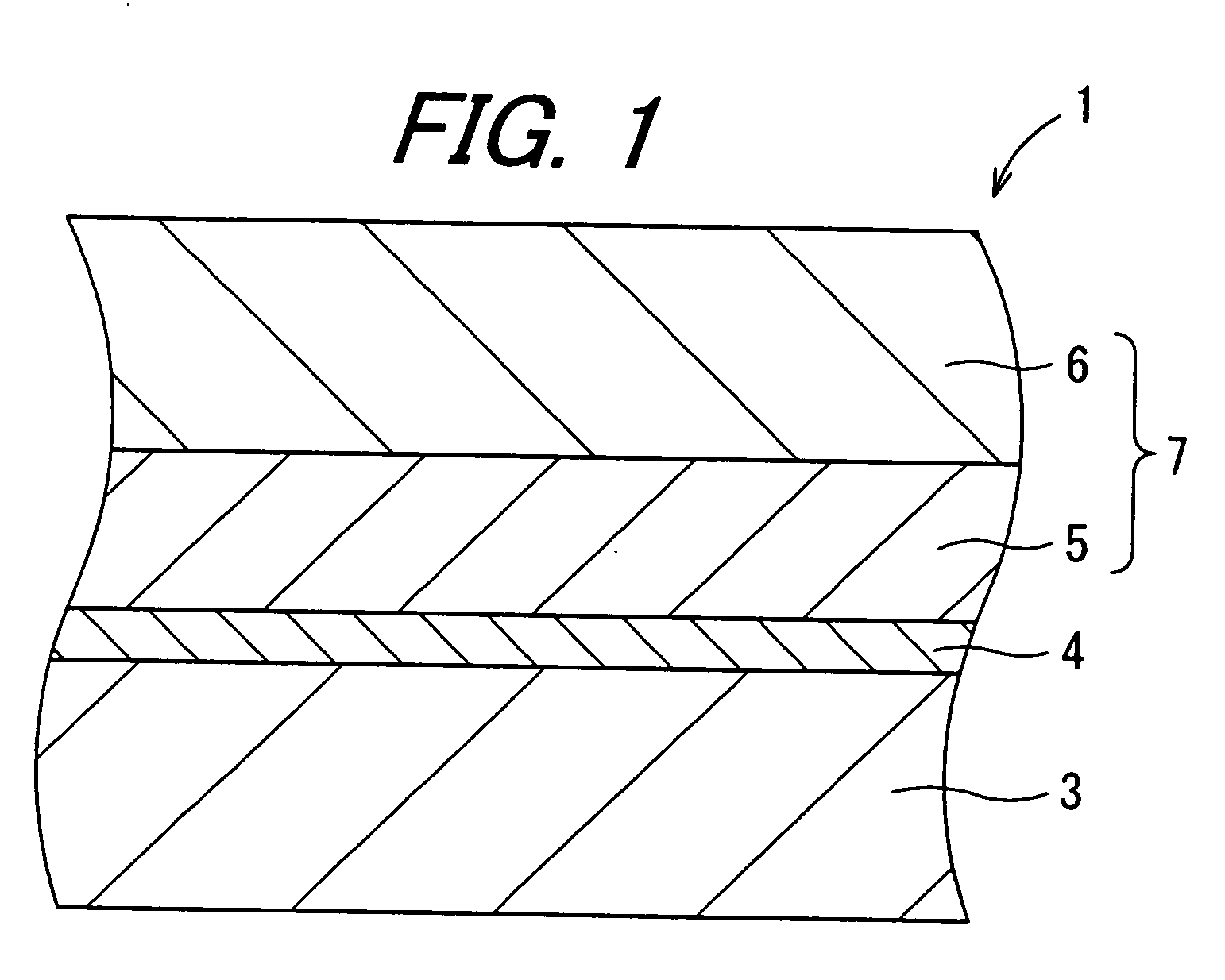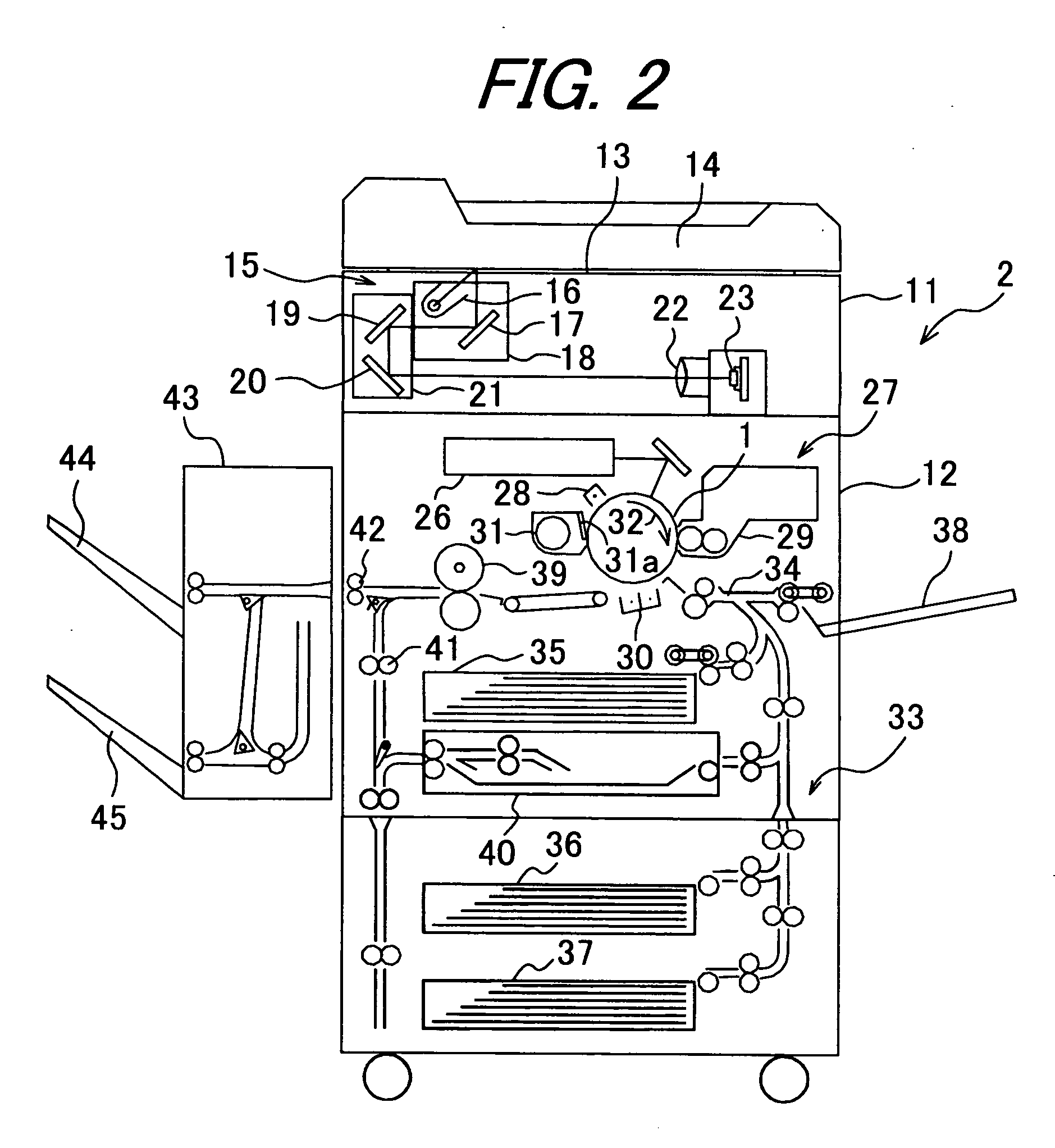Electrophotographic photoreceptor and image forming apparatus
a photoreceptor and photoreceptor technology, applied in the field of electrotrophotographic photoreceptor and image forming apparatus, can solve the problems of inability to achieve high-speed operation, reduce the sensitivity of the photoreceptor, and reduce the quality of the image to be formed, so as to achieve excellent wear resistance, no injuries, and durability and operation stability.
- Summary
- Abstract
- Description
- Claims
- Application Information
AI Technical Summary
Benefits of technology
Problems solved by technology
Method used
Image
Examples
example 1
[0090] 3 parts of titanium oxide (TTO-MI-1) and 3 parts of an alcohol soluble nylon resin (CM 8000) were added to a mixed solvent of 60 parts of methyl alcohol and 40 parts of 1,3-dioxolane, the mixture was dispersed by a paint shaker for 10 hours to prepare a coating solution for undercoat layer. The coating solution was filled in a coating vessel, in which an aluminum cylindrical conducive support (diameter: 30 mm, length: 346 mm) was dipped and then taken up, spontaneously dried to form a undercoat layer having a layer thickness of 0.9 μm.
[0091] 10 parts of a butyral resin (S-LEC BL-2), 15 parts of titanyl phthalocyanine represented by the following structural formula (2) and 1400 parts of 1,3-dioxolane were dispersed by a ball mill for 72 hours, to prepare a coating solution for charge generating layer. The coating solution was coated on the undercoat layer by the dip coating method in the same manner as in the case of the undercoat layer and spontaneously dried to form a charg...
example 2
[0093] A photoreceptor was formed in the same manner as in Example 1 except for using a bisbutadiene compound represented by the following structural formula (3) as the charge transporting substance.
example 3
[0094] A photoreceptor was formed in the same manner as in Example 1 except for using 99 parts of a polycarbonate resin (GK-400) and 81 parts of a polycarbonate resin (GH503) as the binder resin for the charge transporting layer.
PUM
 Login to View More
Login to View More Abstract
Description
Claims
Application Information
 Login to View More
Login to View More - R&D
- Intellectual Property
- Life Sciences
- Materials
- Tech Scout
- Unparalleled Data Quality
- Higher Quality Content
- 60% Fewer Hallucinations
Browse by: Latest US Patents, China's latest patents, Technical Efficacy Thesaurus, Application Domain, Technology Topic, Popular Technical Reports.
© 2025 PatSnap. All rights reserved.Legal|Privacy policy|Modern Slavery Act Transparency Statement|Sitemap|About US| Contact US: help@patsnap.com



